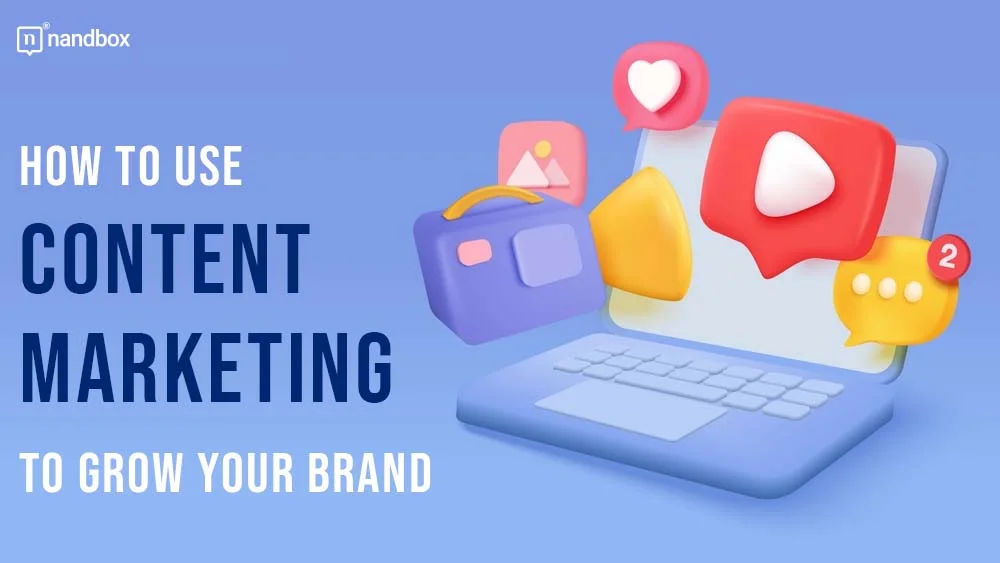Do you feel like your traditional marketing efforts fall on deaf ears? It’s time to let content marketing be your megaphone. This powerful marketing strategy can help you reach more people, build trust, and boost your bottom line. Research has shown that companies with blogs generate 67% more leads per month than those without. The same research claims that content marketing costs 62% less than traditional marketing methods. That’s a double win for your brand’s growth and your budget. But how to use content marketing to grow your business?
In this guide, we’ll show you how to use content marketing to grow your business and connect with your audience. You’ll learn practical strategies you can start using today to attract more customers, increase engagement, and stand out in your industry. Let’s begin transforming your brand’s online presence.
How to Use Content Marketing to Grow Your Business: Publish Timeless Content
If you want to become the go-to expert in your field, evergreen content can be your ticket. This strategy is all about creating valuable resources that stand the test of time. When you consistently publish high-quality, evergreen content, you’re building a foundation of trust and authority. In fact, 86% of business executives believe that quality thought leadership can drive trust in an organization.
To create timeless content:
- Single out the core questions and challenges in your industry.
- Then, create in-depth guides, how-tos, and explainers that address these topics thoroughly.
- Don’t skimp on research; back up your points with data and expert insights.
- Use clear, accessible language and break up your text with subheadings, bullet points, and visuals to make it easy to digest.
- Keep your content updated as new information emerges, but focus on topics that won’t go out of style next week.
Remember, quality trumps quantity. It’s better to publish one comprehensive piece a month than rush out subpar content weekly. An example is Greenhouse Emporium, a retailer specializing in gardening and greenhouse supplies. Their “Ultimate Greenhouse Guide” is a massive 5,000-word resource covering everything from choosing and building a greenhouse to maintaining it.
By creating this comprehensive guide, Greenhouse Emporium positioned itself as a trusted authority in its niche. This type of content attracts potential customers and keeps them coming back for more information and more products.
How to Use Content Marketing to Grow your Business: Provide Genuinely Help
Nobody likes a pushy salesperson. The same goes for content. When you focus on providing genuinely helpful information, you’re making a sale while building a relationship. This approach shows your audience that you care about their success, not just your bottom line. Also, Google loves this stuff. The search engine giant appreciates content that truly helps users and often rewards it with higher rankings. To show that you care about your customers:
- Put yourself in their shoes. What problems keep them up at night? What questions do they need answered?
- Create content that addresses these issues head-on.
- Don’t hold back—share your best tips, tricks, and insights.
- Use clear examples and step-by-step instructions where possible.
Remember, it’s not about you—it’s about them. Keep promotional content to a minimum. Instead, focus on delivering value that your audience can use right away, whether they buy from you or not. Take Going, for example. This online platform focuses on finding low-priced flights and airfare deals.
Their “How to Find Cheap Flights” guide is a masterclass in providing genuine help. It’s packed with valuable tips for anyone looking to save on air travel, whether they use Going’s services or not. The guide covers everything from flexible date searches to avoiding peak travel times for better rates. They only mention their own service a couple of times near the end. By prioritizing helpfulness over self-promotion, Going builds trust and positions itself as a true expert in the travel savings niche.
Be Open About Your Methods
Do you ever wonder why some brands seem more trustworthy than others? It’s often because they pull back the curtain on their processes. Being transparent about your methods is both good ethics and smart business. When you’re open about how you do things, you build credibility and trust with your audience.
This approach works wonders because it shows you’ve got nothing to hide. It tells your audience that you’re confident in what you do and that you’ve got solid proof behind your claims. This level of transparency can set you apart from competitors who keep their methods under wraps.
To openly reveal your research processes:
- Start explaining in clear, simple terms. Whether it’s how you source materials, conduct research, or test products, lay it all out.
- Use visuals like flowcharts or behind-the-scenes photos to make your explanations more engaging.
- Don’t shy away from mentioning challenges or limitations. This honesty makes you more relatable and trustworthy.
- Include this information in your about page, product descriptions, or even dedicate a whole section of your website to it.
- Regularly update this content to reflect any changes in your methods.
Let’s look at how Medical Alert Buyers Guide nails this tactic. This website reviews medical alert systems, a niche where trust is crucial. Their “Best Medical Alert Systems” guide kicks off with a deep dive into their testing and reviewing methods. They break down how they approach each review and the specific tests they run on the devices. This transparency helps readers trust their recommendations, which is vital when dealing with products that can literally be lifesavers.
Spotlight Your Products
While providing value is crucial, there’s nothing wrong with showcasing what you offer. Showcasing your products in your content is a smart way to blend helpful information with gentle promotion. This strategy works because it bridges the gap between information-seeking and buying. When readers are already engaged with your helpful content, they’re more receptive to learning about solutions that address their needs. It’s also a natural way to highlight your expertise and the value of what you sell.
To effectively show your products
- Create content that solves problems or answers questions in your niche.
- Then, naturally weave in mentions of relevant products.
- Be sure to explain why these products are the best solution, but keep the focus on helping the reader.
- Use high-quality images, detailed descriptions, and even customer testimonials to make your products shine.
Balance is key. Your content should still be primarily helpful, with product mentions feeling like a natural addition rather than a hard sell. Golf Cart Tire Supply shows us how it’s done. This supplier of golf cart tires and accessories aces the product spotlight tactic with their “Top 9 Golf Cart Tires” post. They rank the best tires they offer, providing solid information on why each one makes the cut. With the products right there in the content, it’s a breeze for interested customers to make a purchase on the spot. It’s a hole-in-one for helpful content that drives sales.
Build Topical Authority
This strategy involves creating a web of interconnected content that covers your niche inside and out. It’s like becoming the Wikipedia of your industry—when people have questions, they know you’ve got the answers.
This is effective because it signals to both readers and search engines that you’re a true expert. Plus, when readers see you’ve got content on every aspect of their problem, they’re more likely to stick around and trust your advice.
To build topical authority:
- Map out the main topics in your niche.
- Then, create a content plan that covers each of these areas in depth.
- Don’t just scratch the surface—dive deep with detailed guides, how-tos, and tutorials.
- Link these pieces together to create a web of information that guides readers through your content ecosystem.
- Update your content regularly and fill in any gaps you notice.
- Use internal linking strategically to connect related articles and help readers (and search engines) navigate your content.
Main Clinic Supply, a provider of portable oxygen equipment, shows us how it’s done. Their comparison article, “Caire Freestyle Comfort vs. Inogen One G5” isn’t a standalone piece but part of a larger content strategy. The article features over 17 contextual links to other relevant articles on their site. This approach tells readers that they’ve got key insight not just for this topic but for all the other topics their readers might be interested in.
Creating this type of interconnected web of content allows brands to position themselves as the ultimate authority in their industries. This is a really clever way of selling products by providing a comprehensive resource that keeps readers coming back for more.
Wrapping Up
These content marketing strategies are more than theories. They’re proven tactics used by successful businesses across industries. The best part is that you can start implementing them today. Whatever you choose to do, keep in mind that consistency is key. Stay true to your chosen strategy and keep churning out some great content. So, don’t wait for the perfect moment—start creating now. Your audience is out there, hungry for the insights only you can provide. Roll up your sleeves and fire up that keyboard!





